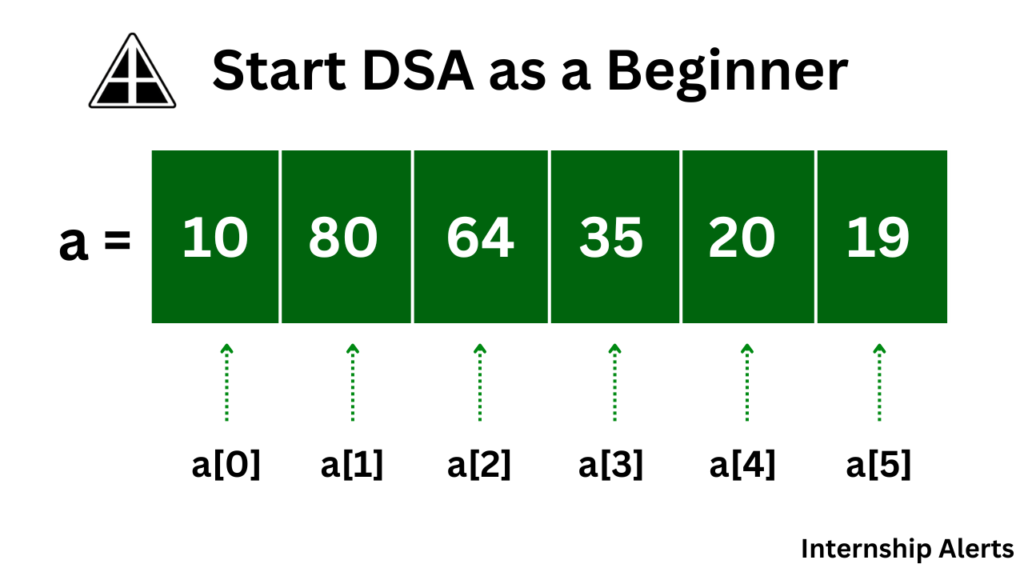How to Start Learning Data Structures and Algorithms (DSA) from Scratch?

1. Understand the Importance of DSA
Data Structures and Algorithms are the foundation of computer science. Mastering them is crucial for:
- Efficient problem-solving
- Coding interviews (especially for top tech companies like Google, Amazon, etc.)
- Competitive programming and building robust applications
2. Start with the Basics Before diving into complex topics, ensure you have a solid understanding of programming fundamentals:
- Choose a Programming Language: Python, Java, C++, or JavaScript are popular choices. If you’re new, Python is a great option due to its readability and simplicity.
- Learn Basic Syntax: Familiarize yourself with loops, conditionals, functions, and data types in your chosen language.
3. Learn Fundamental Data Structures Start with the most commonly used data structures:
- Arrays: Learn to store and access elements.
- Linked Lists: Understand the difference between singly and doubly linked lists.
- Stacks and Queues: Know their use cases and how to implement them.
- Hashing: Learn hash maps and hash tables for faster data retrieval.
- Trees (BST, AVL, etc.): These are essential for searching and sorting tasks.
4. Dive into Algorithms Once you’re comfortable with basic data structures, move on to algorithms:
- Sorting Algorithms: Bubble sort, Merge sort, Quick sort, etc. Start with basic ones before exploring optimized versions.
- Searching Algorithms: Linear search and Binary search are fundamental algorithms every programmer should master.
- Recursion and Backtracking: Understand how problems like the N-Queens problem and permutations are solved with recursion.
5. Focus on Time and Space Complexity Every algorithm has an associated time complexity (how fast it runs) and space complexity (how much memory it uses). Learn the Big-O notation to evaluate the efficiency of your algorithms.
6. Practice, Practice, Practice
- Solve Problems: Use platforms like LeetCode, HackerRank, Codeforces, and GeeksforGeeks itself to practice.
- Participate in Contests: Join coding competitions to improve your speed and problem-solving skills.
- Work on Real Projects: Apply DSA concepts in real-world applications or build projects to reinforce your understanding.
7. Structured Learning Approach To avoid feeling overwhelmed, follow a structured path:
- Start with Arrays and Linked Lists: These are the building blocks for more complex structures.
- Progress to Stacks, Queues, and Hashing: These will help solve a variety of coding problems.
- Advance to Trees, Graphs, and Dynamic Programming: These are more complex but crucial for mastering DSA.
8. Study Algorithmic Techniques Apart from individual algorithms, focus on understanding algorithmic paradigms:
- Greedy Algorithms
- Divide and Conquer
- Dynamic Programming
- Graph Traversal (BFS/DFS)
9. Learn from Mistakes
- Debugging: If you encounter issues, debug your code and understand where things went wrong.
- Understand Solutions: When stuck, look at solutions but make sure to try and understand them thoroughly instead of just copying them.
10. Stay Consistent Learning DSA takes time and patience. Set aside dedicated time daily or weekly to practice and study. Stay consistent, and track your progress.
By following this structured approach, you can build a strong understanding of Data Structures and Algorithms that will not only help in technical interviews but also enhance your overall problem-solving skills.


